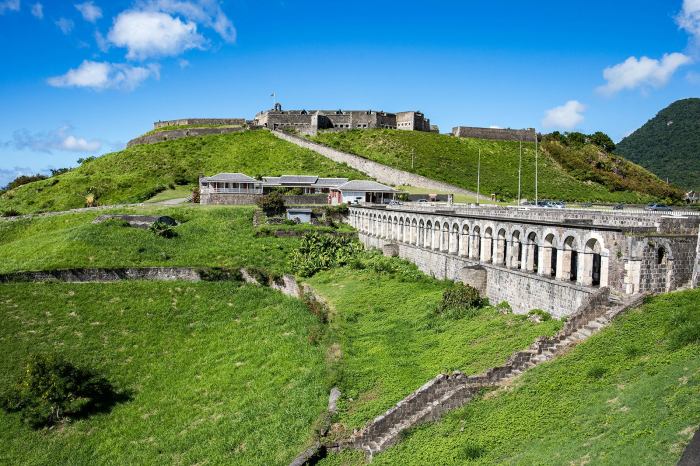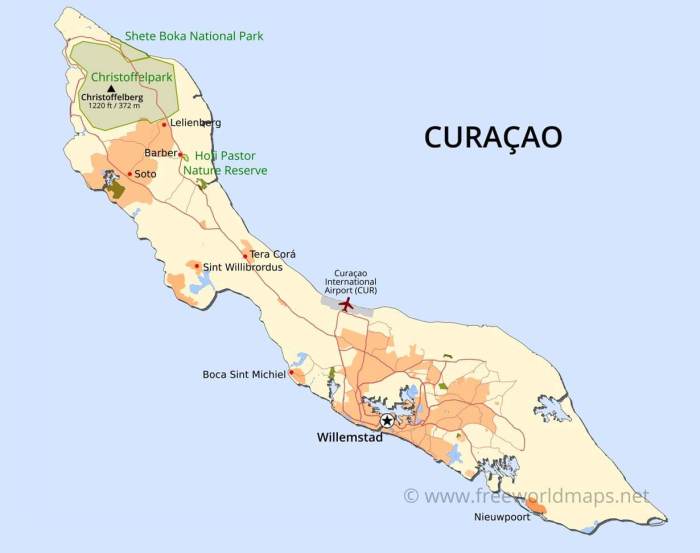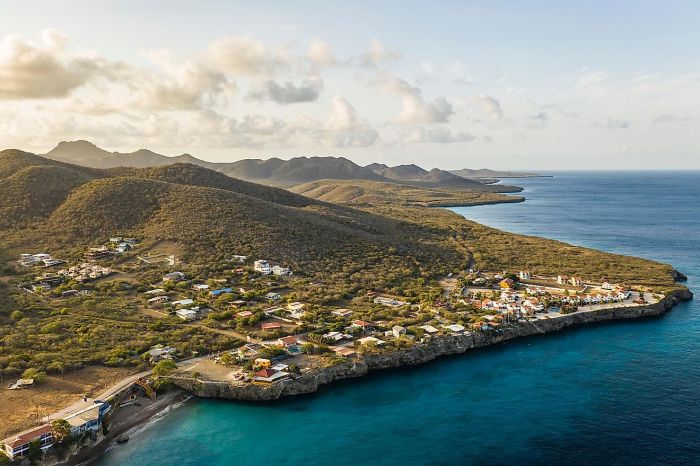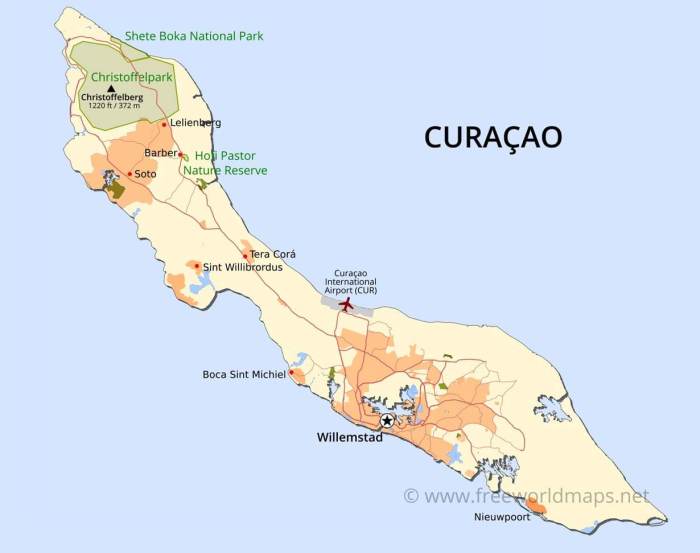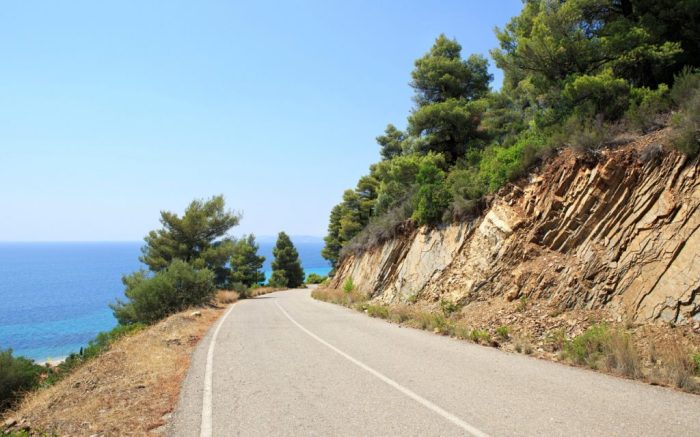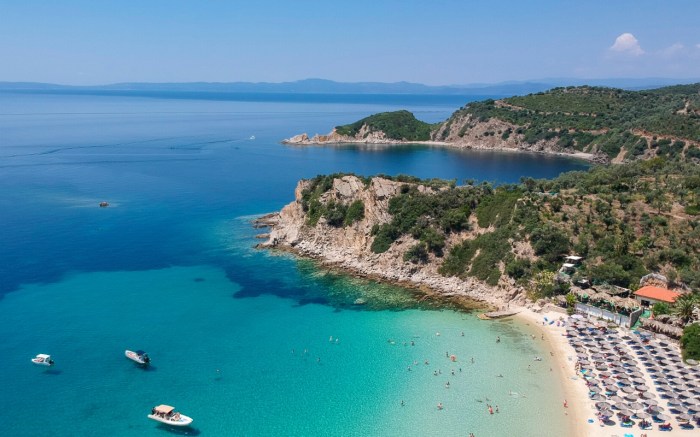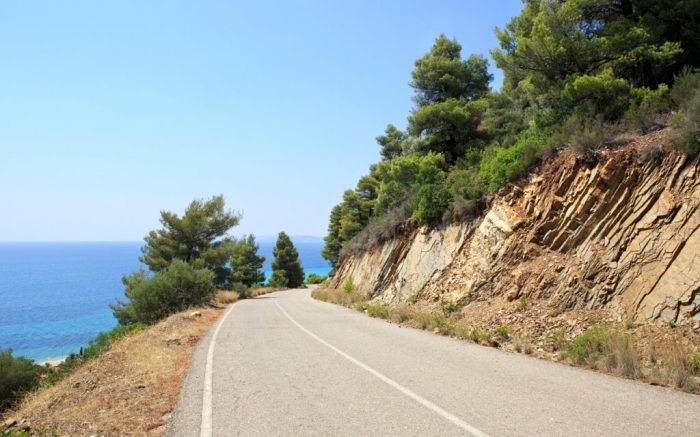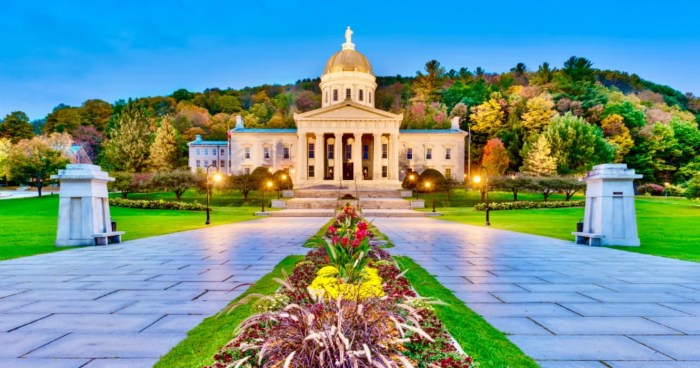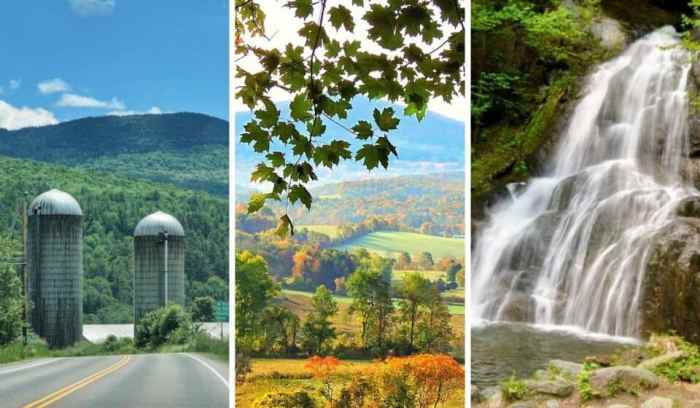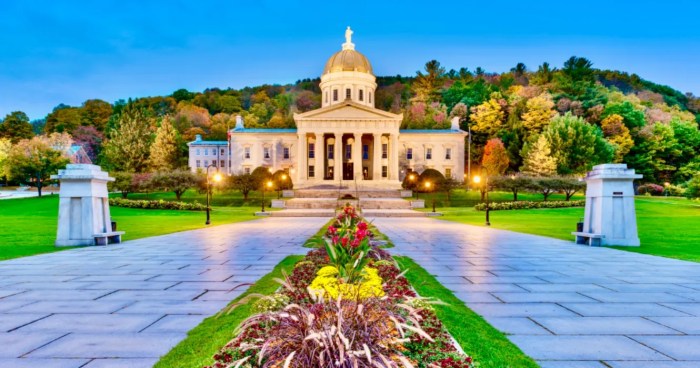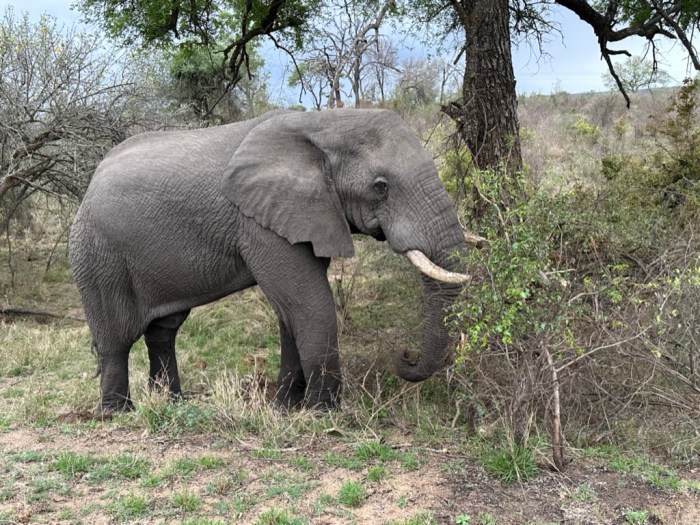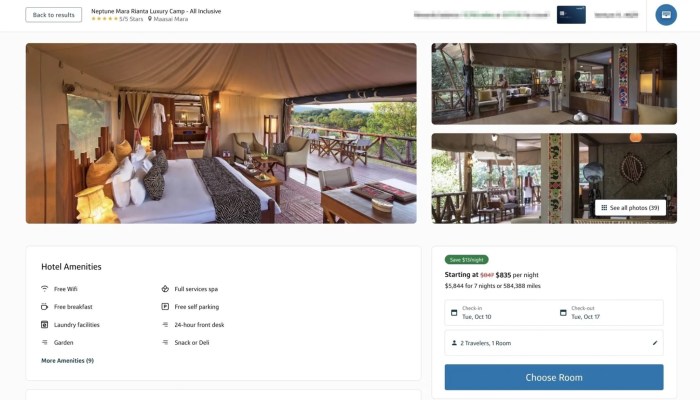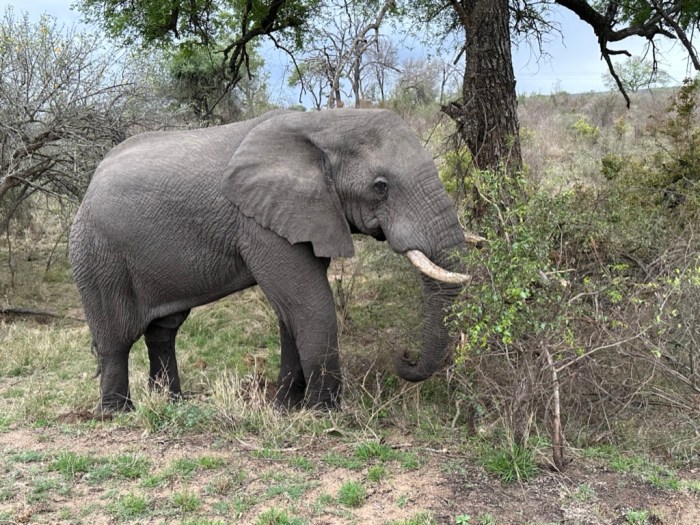Guide to st kitts nevis – Guide to St. Kitts & Nevis: Uncover the hidden gems and vibrant culture of this stunning Caribbean paradise. From lush rainforests to pristine beaches, this comprehensive guide will take you on a journey through the islands, offering insights into the best accommodations, exciting activities, delicious food, and essential travel information. Get ready to plan your unforgettable vacation!
This guide explores the diverse offerings of St. Kitts and Nevis, providing a detailed overview of everything from the history and culture to the practicalities of planning your trip. We’ll delve into the unique characteristics that set these islands apart, highlighting the best accommodation options, exciting activities, and delectable culinary experiences. Discover how to navigate the islands, ensuring a smooth and enjoyable trip from start to finish.
Introduction to St. Kitts and Nevis
Nestled in the heart of the Caribbean, St. Kitts and Nevis are a captivating pair of islands offering a unique blend of history, culture, and natural beauty. From volcanic peaks to pristine beaches, these twin jewels boast a rich heritage that intertwines with their breathtaking landscapes. Discover the captivating allure of St. Kitts and Nevis, a destination that promises an unforgettable experience for every traveler.St.
Kitts and Nevis stand apart from other Caribbean islands with their distinctly laid-back charm and the abundance of natural wonders. The islands’ historical significance, intertwined with their vibrant culture, creates a compelling narrative for visitors to explore. The tourist experience often centers around exploring the lush landscapes, relaxing on pristine beaches, and engaging with the warm, welcoming local communities.
The islands are not just a vacation spot; they are a gateway to experiencing a unique piece of Caribbean history and culture.
Historical Overview
St. Kitts and Nevis boast a rich history, marked by European colonization and a resilience that shaped the islands’ identity. The islands were initially inhabited by indigenous peoples, and later became a focal point of European colonization, with British influence being prominent. This period left its mark on the architecture, language, and customs of the islands. The islands’ past is reflected in their cultural heritage, evident in museums, historical sites, and traditional practices.
This historical narrative provides a deeper understanding of the islands’ present identity.
Cultural Characteristics
St. Kitts and Nevis are a melting pot of cultures, reflecting their diverse history. A blend of African, European, and indigenous influences create a unique cultural tapestry. This is evident in the music, cuisine, and traditions, making it a truly immersive experience for visitors. The warmth and hospitality of the local people are a defining characteristic, fostering a welcoming atmosphere for travelers.
Local customs and traditions are an integral part of the cultural experience.
Typical Tourist Experience
The typical tourist experience in St. Kitts and Nevis often involves a blend of relaxation and exploration. Visitors frequently spend time on the stunning beaches, engaging in water sports like snorkeling and diving. The islands also offer opportunities for hiking and exploring historical sites. Many tourists partake in cultural activities like attending local events or visiting historical landmarks.
The overall experience emphasizes the tranquility and beauty of the islands, while also offering opportunities for deeper cultural engagement.
Key Features of St. Kitts and Nevis
| Feature | Details |
|---|---|
| Size | St. Kitts (168 sq mi), Nevis (35 sq mi) |
| Population | Approximately 50,000 |
| Climate | Tropical; warm temperatures year-round, with a wet and dry season. |
| Currency | Eastern Caribbean Dollar (EC$) |
| Language | English |
This table provides a concise overview of the key characteristics that define St. Kitts and Nevis. These figures offer a foundational understanding of the islands’ size, population, and climate, providing a practical context for potential visitors.
Accommodation Options

St. Kitts and Nevis offers a diverse range of accommodation options to cater to every traveler’s needs and preferences, from budget-conscious backpackers to luxury-seeking couples. Whether you’re seeking a secluded villa experience, a vibrant resort atmosphere, or a comfortable hotel stay, the islands provide something for everyone. Understanding the nuances of each type of accommodation is crucial to choosing the perfect fit for your trip.The availability of various accommodation types reflects the diverse tourism offerings in St.
Kitts and Nevis. This allows visitors to find the perfect blend of comfort, amenities, and experiences to match their travel style and budget.
Hotel Accommodations
Hotels offer a range of amenities, including pools, restaurants, and often, proximity to local attractions. Generally, hotels are a cost-effective option for travelers who value convenience and a central location. However, they may lack the privacy and personalized service often found in villas or resorts. Some hotels in St. Kitts and Nevis offer exceptional service, luxurious rooms, and a wide range of amenities.
For instance, many hotels have on-site restaurants, bars, and spas.
Resort Accommodations
Resorts provide a more comprehensive experience, typically encompassing a range of facilities, such as multiple restaurants, bars, pools, and entertainment options. They often feature a variety of room types and cater to a broader range of traveler needs, from families to couples. Resorts often offer a more exclusive and all-inclusive experience, but can be more expensive than hotels.
A key advantage of resorts is their integration of multiple services under one roof, making them convenient for travelers who prefer not to have to navigate various establishments.
Villa Accommodations
Villas offer a higher degree of privacy and space, often with kitchens and living areas. They are particularly well-suited for families or groups who want more independence and a home-like atmosphere. However, villas typically require more self-catering, and may not have the same level of on-site amenities as hotels or resorts. For example, some villas in St.
Kitts and Nevis offer breathtaking views, private pools, and direct access to beaches.
Luxury Accommodations
Luxury accommodations in St. Kitts and Nevis are renowned for their opulent amenities and exceptional service. These accommodations often feature private pools, butler service, gourmet dining experiences, and stunning views. They are an excellent choice for those seeking a truly exceptional and unforgettable travel experience. Luxury resorts, in particular, provide lavish amenities and a dedicated staff to cater to every need.
For example, some luxury resorts offer personalized excursions and bespoke dining experiences.
Best Accommodations for Different Travelers
For families, villas with multiple bedrooms and living spaces offer a comfortable and private environment. For couples, a secluded villa or a luxury suite in a resort or hotel can provide intimacy and personalized service. Solo travelers can opt for comfortable hotels or resorts offering a social atmosphere.
Accommodation Price Ranges
| Accommodation Type | Price Range (USD per night) |
|---|---|
| Budget Hotels | $50-$200 |
| Mid-Range Hotels | $200-$500 |
| Luxury Hotels/Resorts | $500-$1000+ |
| Villas (small) | $500-$1500+ |
| Villas (large) | $1500-$5000+ |
| Luxury Villas | $5000+ |
Note: Prices are estimates and may vary depending on the season, specific property, and amenities.
Activities and Attractions
St. Kitts and Nevis offer a delightful blend of historical exploration, thrilling water sports, and serene natural beauty. From exploring ancient landmarks to enjoying the vibrant marine life, there’s something for every traveler. This section details the must-see attractions and activities, offering insights into planning a memorable trip to these Caribbean gems.
Planning a trip to St. Kitts & Nevis? I’ve got a fantastic guide on the way! While exploring the best all inclusive adults only resorts in Mexico, best all inclusive adults only resorts in mexico , I realized how much I appreciate the serenity and beauty of these Caribbean islands. From pristine beaches to luxurious accommodations, St.
Kitts & Nevis is a must-visit.
Popular Activities and Attractions
St. Kitts and Nevis boast a range of activities to suit every taste. These include historical explorations, invigorating water sports, and opportunities for relaxation and rejuvenation. The islands are known for their stunning beaches, vibrant marine life, and rich cultural heritage.
- Beaches: The islands boast pristine beaches, perfect for sunbathing, swimming, and enjoying the warm Caribbean waters. Famous beaches like Frigate Bay Beach and Half Moon Bay are renowned for their white sands and crystal-clear waters, providing idyllic settings for relaxation.
- Hiking and Nature Walks: For those seeking adventure, hiking trails offer opportunities to explore the lush landscapes and discover hidden waterfalls and scenic viewpoints. The islands’ varied terrain ensures diverse hiking experiences, from gentle walks to more challenging climbs.
- Water Sports: From snorkeling and diving to windsurfing and sailing, St. Kitts and Nevis offer a plethora of water sports activities. The clear waters and abundant marine life provide excellent opportunities for snorkeling and diving, while the steady trade winds make the islands a popular destination for windsurfing and sailing.
Must-See Historical Sites and Landmarks
St. Kitts and Nevis hold a rich history, evident in their impressive landmarks. These sites offer a glimpse into the islands’ past, from the era of colonization to the present day.
- Fort Charles: A historic fort, Fort Charles, stands as a testament to the island’s colonial past. Visitors can explore the fort’s well-preserved structures and learn about its role in defending the island. This landmark is a popular attraction for history buffs.
- Sugarcane Plantation: Many historical plantations offer tours that provide insight into the islands’ agricultural history. Visitors can learn about the sugarcane industry, a cornerstone of the islands’ past, through guided tours and demonstrations. These tours typically include a visit to the plantation and its surrounding areas.
Various Water Sports and Outdoor Activities
St. Kitts and Nevis’s natural beauty is perfectly suited for a wide range of water sports. The clear waters and consistent trade winds make these islands a haven for sailors and windsurfers.
- Snorkeling and Diving: The vibrant coral reefs and abundant marine life make snorkeling and diving unforgettable experiences. Numerous dive sites offer opportunities to discover colorful fish, coral formations, and fascinating marine creatures. This is a great option for those seeking an active experience that involves exploring the underwater world.
- Sailing and Windsurfing: The consistent trade winds of St. Kitts and Nevis make these islands ideal for sailing and windsurfing. Numerous sailing and windsurfing schools offer lessons for all levels of experience, while the clear waters and scenic views offer an unforgettable experience. Experienced sailors can rent boats and explore the islands at their own pace.
Unique Experiences Specific to the Islands
St. Kitts and Nevis provide unique experiences that go beyond the typical tourist activities. These activities offer a deeper connection with the local culture and traditions.
- Culinary Tours: Exploring local cuisine through culinary tours provides a taste of the islands’ vibrant culture. These tours often include visits to local markets, restaurants, and cooking classes, offering a deeper understanding of the islands’ culinary heritage.
- Island Hopping: A day trip to Nevis from St. Kitts, or vice versa, allows exploration of both islands in one day. Ferry services are available for this. This experience provides a quick taste of both islands’ distinct charms, a great option for those who want to experience both islands without extended stays.
How to Plan a Day Trip from One Island to Another
Ferry services connect St. Kitts and Nevis, allowing for day trips between the islands. Ferry schedules and ticket prices should be checked in advance to avoid any surprises.
- Ferry Schedules: Check the ferry schedules and routes online or at the ferry terminal to plan your trip efficiently. This ensures your trip is well-organized and timely.
- Ticket Purchases: Purchase ferry tickets in advance, if possible, to secure your spot and possibly get better deals. This can help you to manage your budget effectively and ensure a smooth trip.
Attraction Details and Costs
| Attraction | Description | Estimated Cost (USD) |
|---|---|---|
| Fort Charles | Historic fort offering insights into the island’s colonial past. | $10 – $15 |
| Frigate Bay Beach | Renowned for its white sands and crystal-clear waters. | Free |
| Snorkeling Tour | Guided snorkeling tour exploring vibrant coral reefs. | $50 – $80 |
| Island Hopping (Ferry) | Day trip to the other island via ferry. | $25 – $40 |
Food and Drink: Guide To St Kitts Nevis
St. Kitts and Nevis offer a delightful culinary experience, blending Caribbean flavors with international influences. The islands’ fresh produce, sourced from local farms and vibrant markets, forms the backbone of their cuisine. Expect a fusion of flavors, reflecting the islands’ diverse history and cultural exchange.A true taste of St. Kitts and Nevis goes beyond just the food; it’s about the experience.
From casual beachside snacks to fine dining in elegant restaurants, the islands provide a variety of culinary options to suit every palate and budget. The warm hospitality and vibrant atmosphere enhance the enjoyment of every meal.
Local Cuisine and Culinary Traditions
St. Kitts and Nevis’ cuisine is a delicious reflection of their history. Traditional dishes often feature fresh seafood, hearty vegetables, and locally grown fruits. The influence of African, European, and Asian cultures is evident in the unique blend of flavors. The islands’ rich agricultural heritage ensures a wide variety of fresh ingredients are available, often incorporated into traditional dishes.
Best Restaurants and Eateries
The islands offer a diverse range of dining options, catering to various tastes and budgets. From casual beachfront eateries serving fresh seafood to elegant restaurants showcasing innovative cuisine, there’s a place for everyone. For a truly authentic experience, consider trying a local restaurant specializing in traditional dishes. These often feature family recipes passed down through generations. For a more modern twist on Caribbean flavors, explore restaurants featuring fusion cuisine.
Local Specialties and Unique Ingredients
St. Kitts and Nevis boast a rich array of local specialties, highlighting the unique ingredients available on the islands. Fresh seafood, particularly lobster and snapper, are prominent in the local cuisine. Locally grown fruits and vegetables, such as mangoes, papayas, and callaloo, add a vibrant touch to dishes. The use of spices like allspice, scotch bonnet peppers, and thyme creates distinctive flavor profiles.
These ingredients are central to the culinary identity of the islands.
Local Drinks and Beverages
The islands offer a delightful selection of local drinks, complementing the diverse range of food. Freshly squeezed juices from local fruits, such as mango and pineapple, are a refreshing option. Local rum, distilled from sugarcane, is a must-try, often enjoyed in cocktails. Traditional herbal teas and local fruit-infused drinks provide a taste of the islands’ natural bounty.
Local Food and Drink Experiences to Try
To fully immerse yourself in the culinary scene, try these experiences:
- Attend a local food market to sample fresh produce and local delicacies.
- Take a cooking class to learn how to prepare traditional St. Kitts and Nevis dishes.
- Enjoy a sunset dinner at a beachfront restaurant, savoring the views and local flavors.
- Visit a local rum distillery to experience the rum-making process and sample various rum varieties.
Local Dishes and Descriptions
| Dish | Description |
|---|---|
| Callaloo Soup | A traditional soup made with callaloo greens, a staple in the Caribbean diet. Often includes fish, meat, or both. |
| Flying Fish | A popular dish featuring fried flying fish, often seasoned with spices and served with rice and peas. |
| Rice and Peas | A hearty and flavorful dish, typically made with rice and black-eyed peas, often seasoned with local spices. |
| Grilled Lobster | Freshly grilled lobster, a delicacy on the islands. Typically served with sides like rice and peas or grilled vegetables. |
| Mango Sorbet | A refreshing dessert made with fresh mangoes, a popular local fruit. |
Transportation and Getting Around
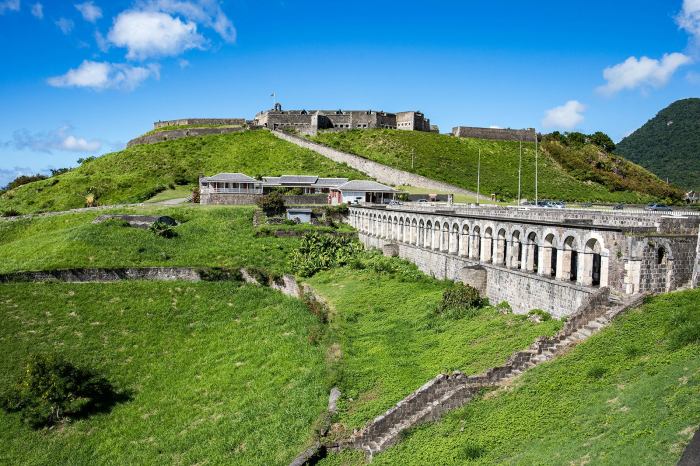
Exploring St. Kitts and Nevis by land is a delightful experience, offering a variety of ways to see the islands. From hopping on a local bus to cruising in a rental car, the islands provide convenient options for every traveler’s preference and budget. Whether you’re seeking a relaxed pace or an adventurous journey, the transportation system allows for a smooth and enjoyable experience.
Planning a trip to St. Kitts and Nevis? Before you pack your bags, consider some essential travel tips. While you’re researching, don’t forget to check out helpful information like what to expect when visiting Boulder, Colorado. For a complete overview of things to anticipate before your trip, explore this helpful guide: things to know before traveling to boulder.
Ultimately, this will make your St. Kitts and Nevis vacation even smoother and more enjoyable.
Modes of Transportation
St. Kitts and Nevis offer a range of transportation options. Public transportation, taxis, and rental vehicles cater to diverse needs and budgets. Buses are a cost-effective way to navigate the islands, while taxis offer convenience and speed. Rental cars or scooters provide flexibility for exploring at your own pace.
Public Transportation
Public buses are a common and affordable mode of transport, especially for shorter distances. Routes are generally well-connected to major towns and tourist destinations. Knowing the bus schedule and routes is essential for efficient travel. Purchase tickets directly from the driver or designated ticket booths. Buses are a reliable, if not always the fastest, way to get around.
Taxis
Taxis are readily available and provide door-to-door service. Negotiating fares beforehand is often recommended to avoid misunderstandings. Taxis can be a convenient choice for traveling between locations with limited public transportation.
Rental Vehicles
Renting a car or scooter allows for complete flexibility in exploring the islands at your own pace. This option is ideal for those who want to discover hidden gems and scenic routes. Consider the size and type of vehicle that best suits your needs and travel style. Insurance is a crucial consideration when renting any vehicle.
Navigating the Islands
Navigating St. Kitts and Nevis is generally straightforward. Road signs are clear, and directions are often easy to follow. Knowing the local customs and traffic patterns will make the experience smoother. Be mindful of parking regulations and local driving laws.
Downloading a local map app or using GPS can further aid in navigation.
Rental Car/Scooter Tips
When renting a car or scooter, be sure to inspect the vehicle thoroughly for any damage before driving. Confirm the rental agreement, including insurance coverage, and understand the local driving rules. Have a detailed itinerary to make the most of your rental. Always check parking regulations, as it can be limited in some areas. Ensure you have the correct license and documentation for your vehicle type.
Comparison of Transportation Options
| Transportation Option | Cost (Approximate) | Pros | Cons |
|---|---|---|---|
| Public Bus | $2-$5 | Affordable, connects major areas | Can be slow, infrequent service |
| Taxi | $5-$20+ | Convenient, door-to-door service | Can be expensive, may require negotiation |
| Rental Car/Scooter | $25-$100+ per day | Flexible, explore at own pace | Requires driving license, potential for parking issues |
Efficiency and Ease of Movement
The islands are relatively small, making travel between locations generally efficient. Traffic congestion is typically minimal, especially outside of peak hours. Walking is also a viable option for exploring smaller towns and areas. Public transportation, taxis, and rentals all offer convenient options for getting around.
Essential Information
Getting ready for your St. Kitts and Nevis adventure involves more than just packing your bags. Understanding the local customs, necessary paperwork, and safety precautions ensures a smooth and enjoyable trip. This section provides crucial information to help you navigate your journey with confidence.
Travel Documents and Visa Requirements
St. Kitts and Nevis welcomes visitors from many countries with visa-free entry for tourism. However, it’s crucial to check the specific visa requirements based on your nationality in advance. This can be done through the official government websites of St. Kitts and Nevis, or by contacting the nearest embassy or consulate.
Ensure your passport is valid for at least six months beyond your intended stay. Copies of important documents like your passport and flight tickets should be kept separately from the originals for security.
Health and Safety Precautions
Maintaining good health is essential for a safe and enjoyable vacation. Consult your doctor about necessary vaccinations and health precautions for the region. Pack light clothing, sunscreen, and insect repellent. Staying hydrated is key, especially in tropical climates. Be mindful of your surroundings and take necessary precautions to avoid petty theft or other common tourist traps.
Local Customs and Etiquette
St. Kitts and Nevis have a rich cultural heritage. Showing respect for local customs and traditions is crucial for a positive experience. Dress modestly when visiting religious sites. Engage with locals politely and respectfully.
Learn a few basic phrases in the local language (English) to enhance your interactions.
Local Currency and Exchange Rates, Guide to st kitts nevis
The Eastern Caribbean Dollar (EC$) is the official currency of St. Kitts and Nevis. You can exchange currency at banks, exchange bureaus, and some hotels. Be aware of exchange rates and fees to ensure you get the best possible deal. Carry a mix of cash and credit/debit cards, as not all establishments may accept all forms of payment.
Practical Advice for Visitors
Planning ahead can minimize stress and maximize your experience. Book accommodations and tours in advance, especially during peak season. Research local transportation options and familiarize yourself with local traffic laws. Engage with the locals and learn from their experiences and recommendations. Be mindful of local regulations and respect the environment.
Essential Information Table
| Category | Details |
|---|---|
| Travel Documents | Valid passport, visa (if required), copies of important documents |
| Health | Consult your doctor, pack appropriate clothing and essentials (sunscreen, insect repellent) |
| Currency | Eastern Caribbean Dollar (EC$) |
| Customs | Dress modestly when visiting religious sites, be respectful of local traditions |
| Safety | Be mindful of your surroundings, keep valuables secure |
Planning Your Trip
Embarking on a Caribbean adventure to St. Kitts and Nevis requires meticulous planning. This crucial phase ensures a smooth and enjoyable experience, maximizing your time and minimizing stress. From choosing the perfect time to visit to crafting a budget-friendly itinerary, this section provides a comprehensive guide to help you plan your unforgettable trip.Thorough planning is essential for a stress-free vacation.
A well-defined itinerary, budget, and booking strategy are key elements to maximizing your enjoyment and minimizing unforeseen issues.
My guide to St. Kitts Nevis is all about finding the perfect island getaway. Thinking about island vacations and private islands? Check out some awesome trip ideas at trip ideas island vacations private islands you can for inspiration. Ultimately, St.
Kitts Nevis offers a range of experiences, from relaxation to adventure, making it a truly unique destination.
Creating Your Itinerary
A well-structured itinerary is the backbone of a successful trip. It helps you allocate time effectively for exploring the islands’ diverse attractions. A flexible approach is crucial, as unexpected delays or discoveries are inevitable.
- Day 1-3: Arrival and relaxation at your chosen accommodation. Explore the charming capital city of Basseterre, indulging in local cuisine and experiencing the island’s vibrant culture. Consider a visit to a local rum distillery or plantation for a taste of St. Kitts’ heritage.
- Day 4-5: Embark on a boat tour or snorkeling adventure to marvel at the stunning coral reefs and vibrant marine life. Alternatively, explore the volcanic landscapes and historical sites.
- Day 6-7: Enjoy a final swim in the crystal-clear waters or a leisurely stroll through a botanical garden. Depending on your flight schedule, you might consider some last-minute souvenir shopping or relaxing by the pool.
Choosing the Best Time to Visit
St. Kitts and Nevis enjoys a pleasant tropical climate year-round. However, the best time to visit depends on your preferences and tolerance for crowds.
- Shoulder seasons (April-May and September-October): These periods offer pleasant weather with fewer crowds than peak season, making them ideal for budget-conscious travelers seeking a more intimate experience.
- Peak season (December-March): This period experiences high temperatures and greater tourist traffic, but also offers a wide array of festivities and events.
Booking Flights and Accommodations
Booking flights and accommodations in advance, especially during peak season, is highly recommended to secure the best deals and preferred options.
- Flights: Utilize online travel agencies or airline websites to compare prices and availability. Consider booking flights in advance to secure potential discounts and avoid last-minute price hikes.
- Accommodation: Explore various options, from luxurious resorts to budget-friendly guesthouses, to find the perfect fit for your needs and budget. Read reviews and compare prices across different platforms.
Creating a Trip Budget
A realistic budget is essential for managing your expenses effectively. It helps you prioritize your spending and avoid unexpected financial strain.
- Accommodation Costs: Estimate costs based on the type of accommodation you choose. Luxury resorts will naturally have higher costs than budget-friendly guesthouses.
- Food and Drink: Factor in the cost of meals and drinks. Dining at restaurants will typically be more expensive than grabbing snacks or local street food.
- Activities and Attractions: Consider the cost of tours, excursions, and entrance fees to attractions.
- Transportation: Factor in costs for getting around the islands, whether by taxi, car rental, or public transportation.
- Miscellaneous Expenses: Include a buffer for unforeseen expenses, such as incidentals or souvenirs.
Sample Itinerary and Costs
This table presents a sample itinerary with estimated costs for a 7-day trip to St. Kitts and Nevis. Note that these figures are estimates and may vary depending on your specific choices.
| Day | Activity | Estimated Cost ($) |
|---|---|---|
| 1-3 | Arrival, Relaxation, Basseterre Exploration | $300-$500 |
| 4-5 | Boat Tours/Snorkeling, Volcanic Landscapes | $200-$400 |
| 6-7 | Final Activities, Departure | $150-$300 |
| Total | Estimated 7-Day Trip | $650-$1500 |
Things to Consider
St. Kitts and Nevis, with its stunning beaches and lush landscapes, offers a captivating Caribbean experience. However, planning a trip requires careful consideration of factors like seasonality, alternative destinations, and environmental impact. Understanding these nuances will help you make the most informed decision for your ideal vacation.Considering the best time to visit, the trade-offs between peak and off-peak seasons, and alternative destinations, are essential to creating a well-rounded plan.
Understanding the environmental impact of your travel choices is vital, and this section will also offer suggestions for sustainable tourism.
Peak Season Considerations
Peak season, typically encompassing the months of December to April, presents a plethora of advantages. Crowds are larger, and prices for accommodation and flights tend to be higher. This is also the best time for experiencing the most vibrant festivals and events. However, the higher prices and increased crowds may impact your overall experience, particularly if you value a more tranquil and intimate vacation.
Off-Peak Season Advantages
The off-peak season, generally May to November, offers a more relaxed and affordable experience. You’ll encounter fewer crowds, allowing you to enjoy the islands at your own pace and potentially find better deals on accommodations. Weather conditions are generally favorable, though you might encounter occasional showers.
Best Time to Visit for Different Activities
The optimal time to visit St. Kitts and Nevis depends on your interests. For water sports and sunbathing, the drier months of December to April are ideal. If you prefer exploring the island’s lush vegetation and hiking, the weather remains pleasant year-round, but the peak season may still see increased crowds in these areas. Consider the types of activities you plan to participate in when choosing your travel dates.
Alternative Caribbean Destinations
Beyond St. Kitts and Nevis, the Caribbean offers a multitude of other destinations. Consider exploring the vibrant culture of Barbados, the secluded beaches of the Dominican Republic, or the historical charm of Antigua. Each island presents a unique experience and caters to different interests. Thorough research into specific destinations can provide a deeper understanding of their distinct offerings.
Environmental Considerations
St. Kitts and Nevis, like many Caribbean islands, faces environmental challenges. Tourism, while a significant economic driver, can contribute to issues such as waste management, pollution, and habitat loss. Be mindful of the impact of your choices and consider the importance of protecting the environment.
Sustainable Tourism Recommendations
Embracing sustainable tourism practices is crucial. Choose eco-friendly accommodations, support local businesses, and minimize your environmental footprint by reducing waste, conserving water, and respecting local ecosystems. Responsible travel practices benefit both you and the destination.
Peak vs. Off-Peak Season Comparison
| Feature | Peak Season (Dec-Apr) | Off-Peak Season (May-Nov) |
|---|---|---|
| Crowds | High | Low |
| Accommodation Prices | High | Low |
| Weather | Generally Dry | Generally Pleasant, occasional showers |
| Activities | Excellent for water sports and festivals | Ideal for hiking and exploring nature |
| Overall Experience | Vibrant, but potentially crowded | Relaxed, intimate |
Final Wrap-Up
In conclusion, your journey to St. Kitts & Nevis awaits! This guide provides a comprehensive overview, empowering you to plan the perfect Caribbean escape. From choosing the ideal accommodations to exploring the vibrant culture, this guide is your passport to an unforgettable experience. Embrace the beauty, adventure, and relaxation that await you in this tropical paradise. Let the planning begin!
